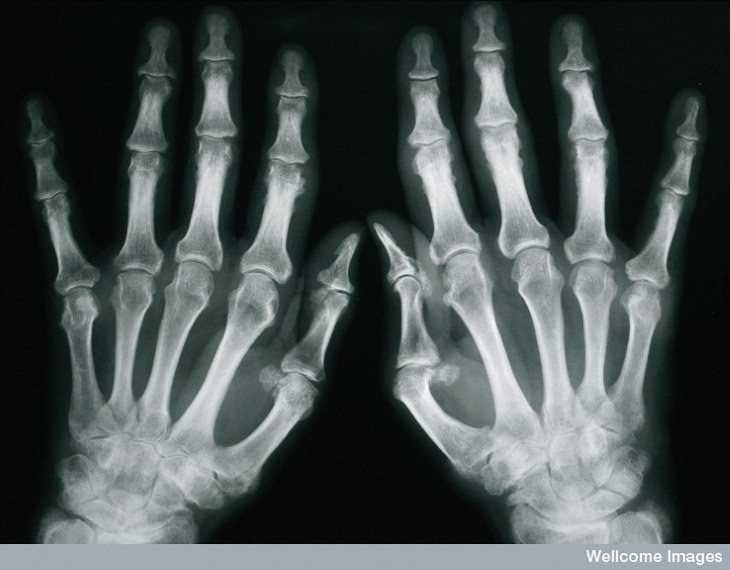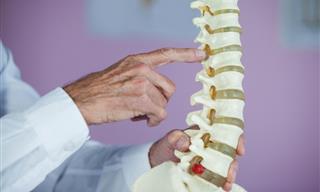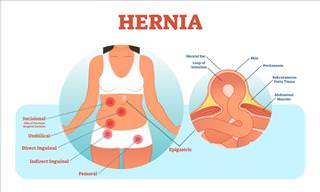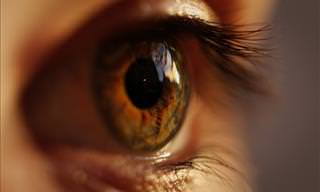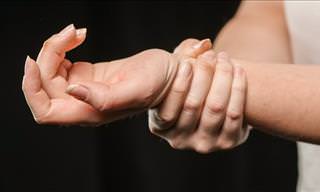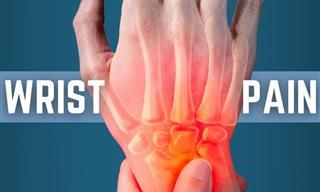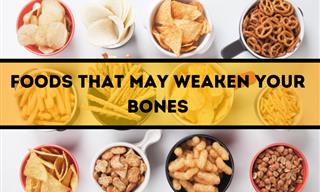1. Osteoarthritis
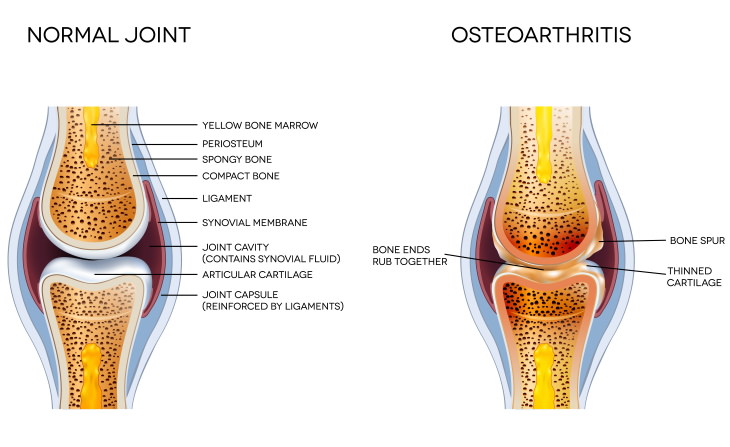
Osteoarthritis is the type most of us think of when we are asked to describe arthritis, and rightfully so. After all, osteoarthritis is the most common kind of arthritis. According to the CDC, it affects 32 million Americans.
Also known under the name degenerative arthritis, this condition usually begins after age 50. This condition occurs when the cartilage that lubricates your joints dissolves, making the bones rub together. The excessive friction, in turn, produces the all-too-familiar symptoms of the condition:
- Joint inflammation
- Morning stiffness
- Pain
- Limited mobility
- Bone injury
- Osteophytes, bony lumps (bone spurs) that appear around the joints or spine.
Like most types of arthritis, osteoarthritis is diagnosed through joint imaging, bloodwork, and a physical exam. To learn more about osteoarthritis, read this article - The Early Warning Signs of Arthritis.
2. Thumb arthritis
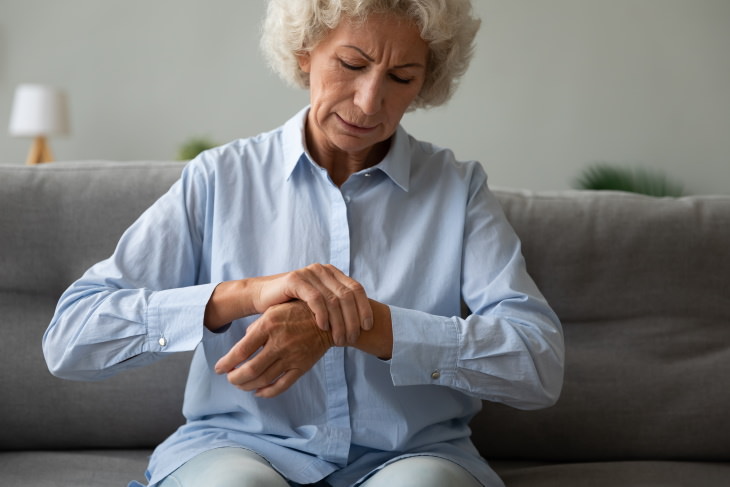
A common subtype of osteoarthritis is thumb arthritis. It affects the joint at the base of your thumb called the carpometacarpal joint, and it can be confused with carpal tunnel syndrome. The condition manifests itself through persistent stiffness, swelling, or pain at the base of your thumb.
Women above age 40 are more likely to suffer from this condition. Thumb arthritis requires early treatment because it can be really debilitating and limiting to patients. The severe hand pain patients experience interferes with one’s ability to grasp items and complete everyday tasks like opening jars or doors.
A simple way to test for thumb arthritis is by touching the tip of your index finger and thumb so that it makes an O shape. If the resulting shape resembles a D more than an O, this could indicate thumb arthritis.
3. Rheumatoid arthritis
Rheumatoid arthritis is the second most common form of arthritis. Despite popular belief, rheumatoid arthritis usually occurs between the age of 30 and 50. Rheumatoid arthritis tends to become rarer as you get older. Unlike osteoarthritis, rheumatoid arthritis is an autoimmune condition, meaning that it begins when the immune system mistakenly attacks its own healthy tissues.
Apart from the joints, rheumatoid arthritis can damage other body parts, such as the heart, blood vessels, lungs, skin, and vision. The symptoms of rheumatoid arthritis are different from those of osteoarthritis. For example, patients suffering from this condition may experience fatigue, loss of appetite, and fever years before the joint symptoms appear.
A frequent symptom of rheumatoid arthritis is Sjögren’s syndrome - a condition when your eyes and mouth are always very dry. Joint symptoms of rheumatoid arthritis tend to begin in smaller joints, namely the fingers and the toes.
Other symptoms of rheumatoid arthritis coincide with other types, namely:
- Morning joint stiffness
- Tender and swollen joints that can be warm to the touch
- Firm bumps under the skin, commonly around the elbows.
4. Gout
Gout is a type of arthritis that occurs when urate crystals accumulate inside the joins. These crystals cause sudden attacks of pain, swelling, redness, and extreme tenderness in one or a few joints, most commonly the big toe. A gout attack can develop within a few hours and may continue for days or even weeks.
Almost 4 percent of the adult American population suffers from gout, and anyone can get it, although men are slightly more likely to get it than women. A diet with too much protein may also increase the level of uric acid in the blood, which could lead to more urate crystal deposits in the joints.
Gout requires treatment to reduce the pain and minimize joint damage. The affected joint can also become infected, which requires urgent medical care.
5. Psoriatic arthritis
Psoriatic arthritis is a type of arthritis that arises in patients suffering from psoriasis. The autoimmune skin condition is poorly understood, but it has a genetic component and usually develops in people aged 30-59. Psoriasis looks like red scaly patches or white dots on fingernails, and it can spread to the joints.
Although the condition is the most likely to affect the fingers, making them swell up and turn pink, any part of the body, including the spine, can be plagued by psoriatic arthritis. Joint swelling, stiffness, and pain are the most common signs of the disease, and these symptoms can come and go, just like the psoriatic skin rash itself.
6. Juvenile arthritis
Juvenile idiopathic arthritis is the most common type. This is a group of autoimmune disorders that affect children 16 years old and younger. Like most arthritis types, juvenile idiopathic arthritis causes swelling, pain, and stiffness in the joints, as well as fatigue and fevers.
Swollen lymph nodes and skin rashes are less common but can occur as well. Unfortunately, the condition often causes complications, such as misaligned joints, bone damage, eye damage, and it may affect the child’s growth. If a child exhibits any of the symptoms mentioned above for over a week, seek medical care.
7. Ankylosing spondylitis
Ankylosing spondylitis is another terrifying form of arthritis that makes the lumbar vertebrae fuse together. It is more common in men than women, but the exact cause of ankylosing spondylitis is unknown. The symptoms of the condition vary a lot and can begin as early as late adolescence or in your 40s.
The condition starts with a feeling of stiffness or pain in the lower back, but over time, it spreads to the shoulder, hips, and ribcage too. The symptoms typically worsen during periods of inactivity, such as sleep or long periods of sitting. The complications of the disease include eye damage, problems breathing, and even heart damage. Read more about this condition here - Home Treatments That Can Help Manage Ankylosing Spondylitis.
8. Systemic lupus erythematosus
Systemic lupus erythematosus is one of the most commonly misdiagnosed health conditions of all. Lupus is an autoimmune disease that affects the entire body, including your internal organs and brain. It often damages the joints and other connective tissue in your body. Joint pain due to lupus usually begins in the hands and feet, and then spreads to other areas.
This condition is more prevalent among women than men, and it can cause anything from fatigue, joint pain, and chest pain to hair loss, skin rashes, and mouth sores. With lupus, diagnosing it as early as possible to prevent severe damage to the internal organs is crucial. It is done through a physical exam and blood tests.
Share this information with family and friends!
 Go to BabaMail
Go to BabaMail






